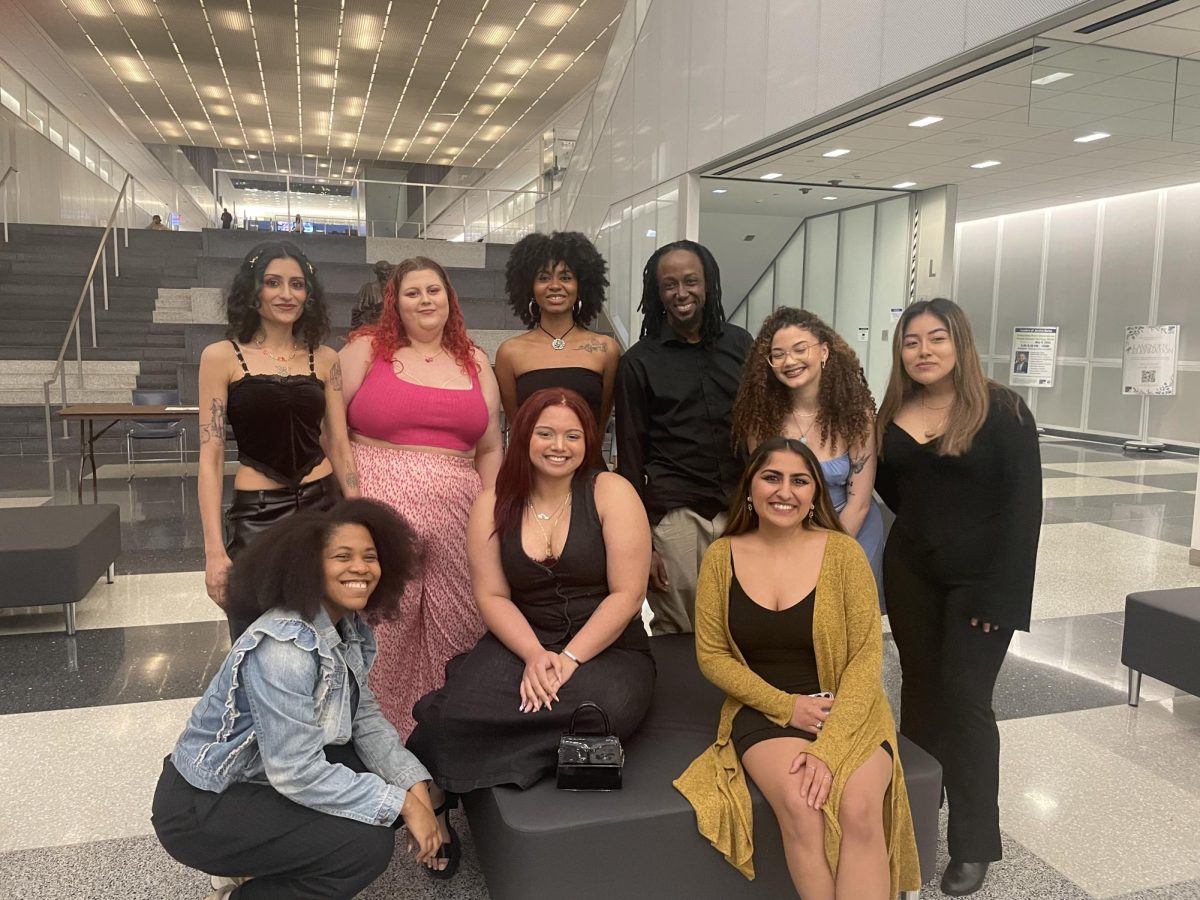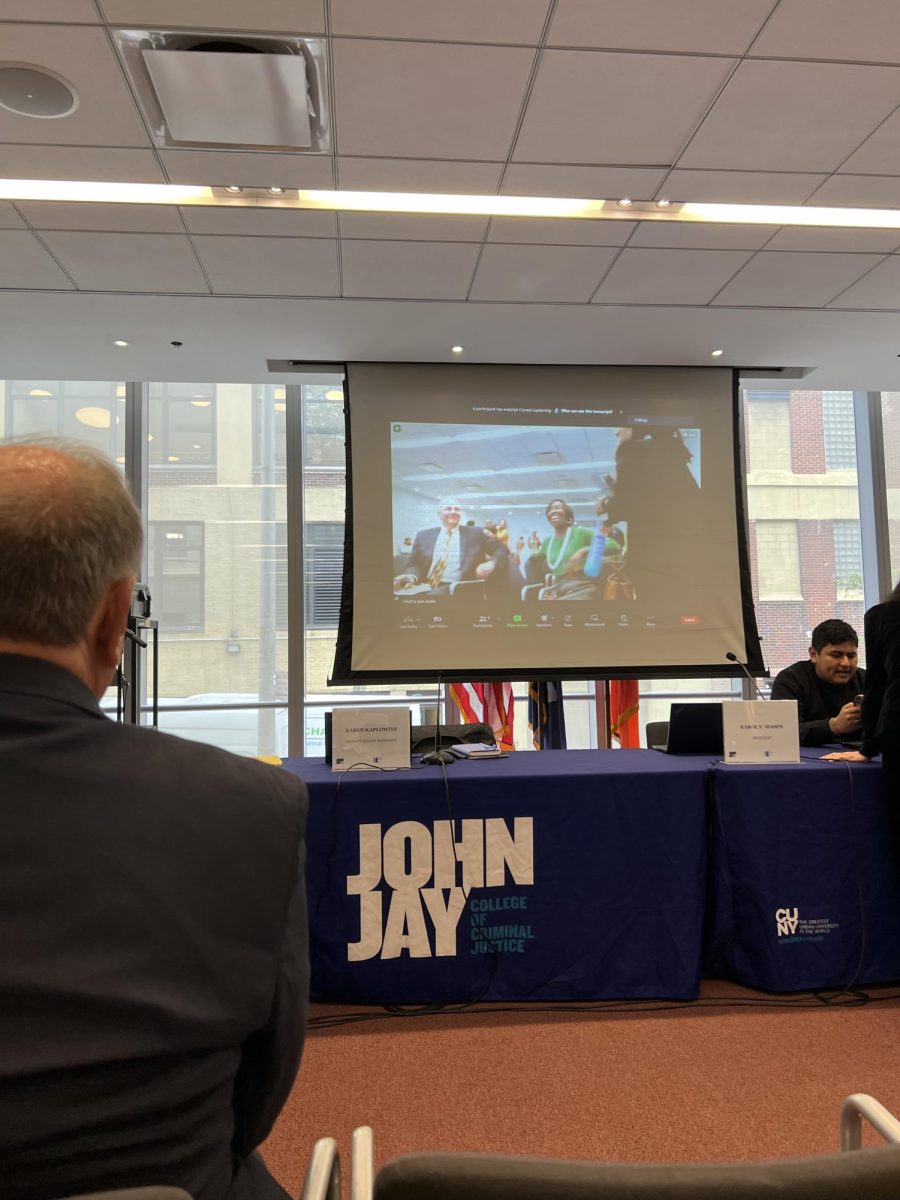When I entered the theater for Saturday’s performance of “Seeing Rape,” a performance written by sixteen John Jay undergraduate playwrights, I was imagining a lecture-style performance that would be uninteresting and gloomy. But, to my pleasant surprise, “Seeing Rape,” for the most part, was upbeat while simultaneously making rape the forefront of the performance. This harmony between entertaining comic relief and the terrifying reality of rape is difficult to achieve, yet the directors, Professor Barbara Cassidy and Professor Shonna Trinch, elucidated the concerns of sexual violence without disheartening the audience.
Through the humor of its first scene, “Seeing Rape” tells the audience that sexual violence will be discussed—but, it will not be as mundane as a Title IX lecture. This scene has four college-aged women discussing their use of a popular dating app. The women speak colloquially and crack jokes, easing the tension in the theater and, instead, immersing the topic of rape in an unorthodox yet engaging context.
The second scene continues this intelligent use of comic relief to make sexual violence an easier matter with which to grapple. A family—consisting of a mother, her two daughters, and her nephew—is ordering pizza for dinner when the youngest daughter is sexually assaulted by her cousin. The older sister had been assaulted by their cousin in the past, and she jumps to her younger sister’s rescue. After learning that her youngest daughter may be pregnant with her nephew’s baby, the mother shoots her nephew after returning home from work. This scene was carefully thought-out—anybody could find themselves in this situation. Although this scene was relatable, it was not generic, keeping me intrigued. It had the humor that set it apart from sexual violence seminars, and, after a mundane week of sitting through classes, I appreciated the comic relief. The humor also relieved my tension, for, when I entered the theater, I was nervous that this performance was going to be too serious for me to enjoy.
In the third scene, three men—Rick, John, and Yancey—are in a group therapy session. They were all convicted for rape, and they each have different stories of how they found themselves in this position. Rick rapes women all of the time, and because he’s a successful businessman, he lives a life of impunity. Yancey has a fetish for young girls. Lastly, John, a recent divorcee, raped a woman and he blames his rapist uncle for him being in this situation. The audience was given the opportunity to examine three distinct reasons why men may rape women and, subsequently, how they live with this guilt (or lack thereof). Instead of being lectured on the unacceptability of sexual violence, my emotions were called into play, leaving me with a powerful sentiment. In a way, I was torn between sympathizing with John and condemning what he had done, and through this conflict, I attained a deeper understanding of the complexity of sexual violence.
In the fourth scene, titled “The Girl,” a woman delivers a heartfelt statement to her mother, who allowed her father to rape her sister. Although her sister is safe now that the father has moved out, the woman is chastising her mother, accusing her of failing to protect her sister. No comic relief is used in this scene. Although I appreciated the interwoven humor in a few of the previous scenes, “The Girl” was very sobering, reminding the audience and me that, regardless of the avenue through with this anti-sexual violence message is sent, rape is a serious topic.
The fifth scene tells the story of a man nicknamed Mexico who is currently incarcerated but, nevertheless, making valiant attempts to become a better person. The man has committed small crimes in the past that have landed him in jail; however, he learns that his former friend raped a young girl. In addition to this, the man’s friend from prison was raped by one of the other prisoners. The intersection of these two narratives induces a spiritual conflict inside the main character, who desperately attempts both to empathize with his former friend (who is a convicted rapist) and denounce rape after hearing about what his friend from jail went through. I enjoyed the stark reality of the situation that this scene portrayed. Sexual violence is not black and white, and through Mexico’s emotional tug-of-war, I had the opportunity to recognize both sides of the struggle.
In scene six, titled “La Familia de Papá,” three sisters inherit their late father’s house in the Bronx and, as a result, must work to maintain the property. The middle sister, Bianca, interviewed for a job and received it, which was a great financial victory for the struggling sisters. But Bianca soon realized that her boss was flirting with her. In addition, the audience soon learned that the oldest sister also worked with this man, and she was forced to have sex with him. After this incident, the eldest sister decided to use Bianca as a scapegoat to avoid having sex with the boss. Although they are earning enough money to lease a brand-new car and handle all of the other expenses, the two older sisters are trapped in a never-ending cycle of sexual violence. As a college student, I understand the importance of earning money. But I hadn’t considered the fact that many of my peers may be working under abusive conditions—whether sexually abusive or emotionally abusive—in an effort to maintain financial stability. Even though this scene did not take a particular side on the issue, it masterfully shed light on the cumbersome relationship between sexual violence and monetary wealth.
The seventh scene takes place on a college campus, where two female students are using an online dating app to meet guys. The first girl was sexually assaulted after a male student took her back to his dorm room after their date. He fingered her, yet she never consented to this sexual act. Although he felt remorse after learning that the girl did not give him consent, the young woman was, ultimately, scarred by this experience. The second girl using the app complained that her parents were too strict when it comes to relationships. Even though she, like the first girl, was also sexually assaulted, she is indifferent to the incident and continues to persistently search for guys on the app. Not only was this scene relatable to me, for I have female friends using dating apps, but to the entire audience of college students. I, personally, recognize the dangers that come with utilizing these apps, where violent individuals can hide behind anonymity. But this scene sent a chill up my spine, for, if my friends aren’t careful, I could envision them standing in the shoes of those two young women.
In scene eight, titled “Colorful Markers,” a group of high school seniors take advantage of a ninth-grade girl, Mila, who passed-out at a party. Lead by a 20-year-old college student named Luke, the high school students proceed to shove markers up the girl’s vagina, and after the men pulled the markers out, Luke fingered Mila. This story is told through a disgustingly casual conversation that two high school seniors had, one being a witness of the incident. Watching these two men engage in this appalling discourse angered me. But, as a male, I also felt resentful, knowing that some of my friends have degraded women through language usage as well. Unfortunately, in addition to this, I have heard stories like these being told, as the storytellers completely disregard the health and safety of the subject of the tale. This scene hit me—and other males in the audience—pretty hard, and although grasping the harsh reality of male discourse stung, this powerful punch was extremely meaningful as I grappled with the concepts surrounding sexual violence.
To finish off the night, scene nine titled “Jubilee,” left the audience feeling empowered to combat sexual violence. In an energetic soliloquy, a woman tells her life story, emphasizing her extensive history of emotional and sexual assault. The woman spent her childhood enduring physical abuse from her mother and emotional abuse from her father. After moving out, she met a man who, initially, treated her well but, ultimately, ended up sexually abusing her for many years. Now, she’s independent, and through her compelling escape from sexual violence, the woman convinced the audience that it’s better to be alone and well-treated than in a relationship tainted with sexual violence. Although this performance was an emotional rollercoaster, at the end of the soliloquy, I felt content. I had assumed that, since this play was titled “Seeing Rape,” that there would be no happy ending. But, this ending was more than just “happy”—it was rejuvenating, encouraging, and promising.
“Seeing Rape” was anything but a sexual violence lecture. It was an upbeat, witty, and engaging account of rape, though it still, ultimately, underscored the severity of sexual violence. I not only shared a laugh with my classmates—but, simultaneously, I examined with this intricate topic through multiple perspectives. I’m definitely glad that I attended this performance!








